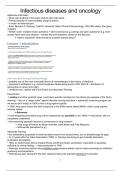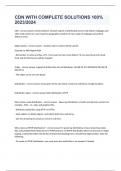Summary
Samenvatting Medicine Group- infectious diseases and oncology (WBFA041-05)
- Course
- Institution
- Book
Summary of all the 11 lectures of the course MG: infectious diseases and oncology. Practice questions from the lectures and the quiz have been added for each lecture
[Show more]




